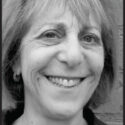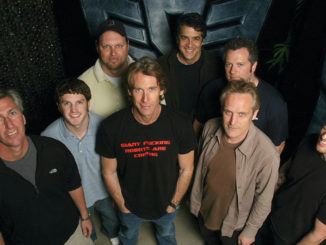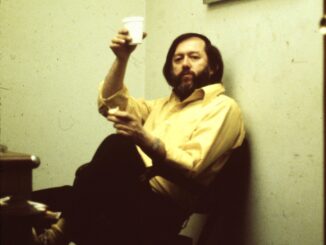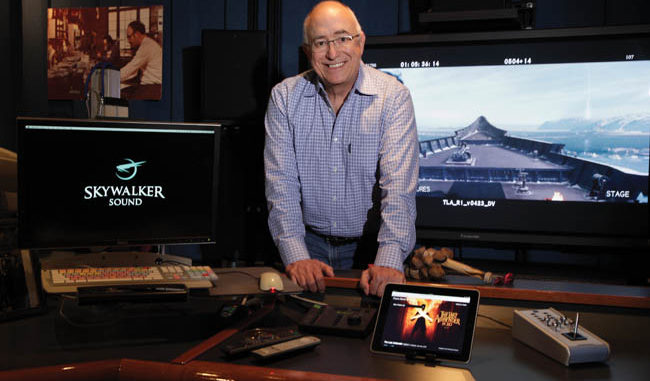
This movie is a playground for sound,” says Randy Thom, CAS, referring to director M. Night Shyamalan’s latest film, The Last Airbender, for which he serves as supervising sound designer, co-supervising sound editor (with Richard Hymns) and re-recording mixer (with Rick Kline).
In the film, which opens July 2 through Paramount Pictures, four tribes with mystical control over the four elements of nature do battle. “The tribes are able to do amazing things––like cause the water in a lake to rise up into giant columns and fly through the air,” Thom continues, adding that very little of that kind of visual imagery has been seen in films before. “So it’s a challenge to create the sounds for them. Like the visuals they accompany, the sounds need to seem organic, believable and real-world––as well as have a kind of majesty or larger-than-life feel to them. I’m having a ball.”
Perhaps no sound design/mixing professional is better suited for the job than Thom, who joined Skywalker Sound in 1979 and has worked on a laundry list of iconic films starting with Apocalypse Now (1979) and running through Return of the Jedi (1983), Wild at Heart (1990), Backdraft (1991), Forrest Gump (1994), Cast Away (2000), Shrek 2 (2004), Ratatouille (2007) and many, many others. No surprise that he has garnered 14 Oscar nominations and two wins (Best Sound Mixing for The Right Stuff in 1983 and Best Sound Editing for The Incredibles in 2004).
Thom got Airbender after he contributed a few sounds to Shyamalan’s Lady in the Water (2006). “Although we never met, we talked on the phone and hit it off well,” recalls Thom about the director. “So technically, this is my second film for him.”
The Last Airbender, a 3-D movie, taps all of Thom’s many strengths as an inventive sound designer. Take the scene in which the villainous fire tribe is holding the members of another tribe in an outdoor prison. One tribe member throws a ball of fire at one of the innocent captives. “You see the fire almost as if it were in slow motion, traveling 100 feet or so, getting closer and closer to its intended target,” recounts Thom. “In terms of the visuals, the fire is moving in all kinds of interesting ways. I couldn’t just record a fire; there would be no movement or sense of it changing as it is propelled through the air.”

Copyright 2010 Paramount Pictures Corporation. All Rights Reserved.
What Thom did was collect a wide variety of fire recordings from among the thousands of distinct fire sounds––from muffled roars to campfires and burning liquids. “The way to make this kind of sequence feel dynamic and feel like the fire evolves as it travels is to create an interwoven mix of many of those different fire sounds,” he explains. “The trick is to do it so it doesn’t sound contrived.”
If The Last Airbender were a sci-fi film, Thom points out, he’d “have the latitude to do electronic processing. But Night was clear that all these sounds needed to be organic and naturalistic.” So Thom had to start with real recordings of fire and find ways to subtly manipulate them. “In terms of editing, you choose which kinds of elements you think you might want to play against each other in a particular moment or sequence,” he says. “And the mixing is about deciding which of those sound elements to focus on from moment to moment.”
“I often say that mixing is mostly about getting rid of things—deciding what is essential in a scene,” he continues. “As that fire travels through space, in each moment we’re featuring a certain sound and subordinating the other sounds. As it travels further and looks a little different, we then focus on another sound and lower the volume of the other sound featured before. And if you do it gracefully enough, it sounds believable.”
This example from The Last Airbender is emblematic of a trend that Thom has identified: the lines being blurred between sound editing and sound mixing. Ten or 20 years ago, sound editors were sound editors and mixers were mixers. “Virtually nobody did both,” says Thom, who mixes on a DFC Neve console.
But then came the ProTools workstation, which has become ubiquitous in sound editing. “ProTools allows us to edit sounds and to have a vast palette of sounds to use, or not, at any given moment,” explains Thom. “You can also mix those sounds in ProTools. It’s natural that those who are inclined to experiment with both have been doing that. The evolution has come a long way, so now people who used to see themselves as mixers only are also doing some editing, and vice versa. It seems we do more and more of the mixing in ProTools and less at the traditional mixing console.”
3-D Sound
The stereoscopic nature of the film also impacts the sound mix. Thom came to this latest film having already worked on a number of stereoscopic films, including How to Train Your Dragon (2010), Coraline (2009), Beowulf (2007), Monster House (2006) and The Polar Express (2004). “3-D impacts what we do on some films more than others,” he relates. “On films where there are objects and people moving forward and backward in the 3-D plane, it’s appropriate to move sounds with those visual images. A film like Coraline is a great example of a film that used 3-D in fairly subtle ways. Director Henry Selick chose not to have many moments in which objects were thrust into the audience’s face. Instead, you got more of the sense of looking into an aquarium. On a film like that, there really isn’t a lot that we need to do to adjust the soundtrack to 3-D.”
Thom notes that, with surround sound, mixers have been able to move sounds into the audience for years. “So sound has been 3-D for that long,” he says. Mixing for stereoscopic movies, however, does pose one challenge. “We rarely get to see the 3-D version of the film until nearly the end of the mixing process,” he says. “Typically, you screen it in 3-D and make notes about what you need to change in the mix. But most of the 3-D effects in this film will be the more subtle kind that won’t call for exaggerated sound moves.”
In part, Thom can rely on both the director and editor Conrad Buff, A.C.E. (with whom he has collaborated on five other films), on where the significant 3-D moments are in the film. “But there are always details you don’t anticipate,” he adds.
Working on another film with Buff is a pleasure, says Thom. “Believe it or not, the relationship between a sound supervisor and editor can be contentious and not altogether pleasant––sometimes due to personal chemistry, sometimes when schedules are tight and budgets are low,” he says. “But Conrad is among the sweetest people I know in the business. He’s easy-going, a real team player. And a good listener, which as a sound person I always appreciate.”
Having worked together several times also has its rewards. “We certainly trust each other a lot,” says Thom. “I trust his judgment absolutely and I think he trusts mine. One thing that means is that you don’t necessarily have to communicate with each other as much as with someone with whom you haven’t developed a common language.”
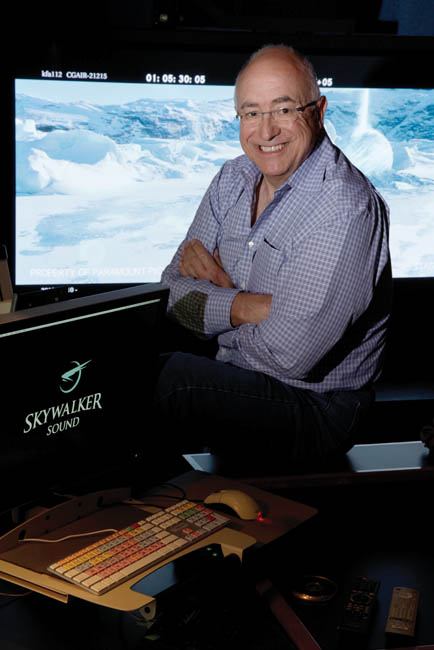
After Math
Thom’s original ambitions were not to be a mixer, but a physicist. When he decided he wasn’t good enough at math, and 1960s Flower Power called, he dropped out of college, roamed around the country and, fortuitously, walked into a radio station. Soon, he found himself producing documentaries for National Public Radio and radio plays, and then caught the bug to work in Hollywood.
He knocked on a lot of doors and made a lot of cold phone calls until someone gave him the phone number for Walter Murch, A.C.E., CAS, MPSE, and told him Murch was approachable. “I called him out of the blue,” says Thom. “Being the nice guy he is, he invited me to come watch him work for a day, remixing American Graffiti in stereo.” At the end of the day, Murch asked Thom to write an essay about what he’d seen and heard.
Murch must have liked what Thom wrote because he hired him to work on Apocalypse Now, on which Murch was sound designer/re-recording mixer, as well as one of three picture editors. “I’ve been incredibly lucky in my career and that was probably the luckiest moment of all,” says Thom. “It was the best film school I could go to.” Among his jobs, he recorded sounds as disparate as helicopters and buzzing flies, and was a helper to the mixer. Apocalypse Now was mixed for nine months. “That film is probably Exhibit A in terms of how to design a film for sound,” says Thom. “There were fairly long moments in the film where there was sparse or no dialogue. Walter could take those sonic doors that director Francis Ford Coppola had opened for him and walk through them with beautiful, evocative sounds.”
During the making of the film, sound people from both Apocalypse Now and American Graffiti went on a joint recording expedition with machine guns, grenades and other explosives. The lead person from Skywalker Sound was Ben Burtt. Sure enough, he and Thom hit it off and Burtt invited Thom to work on The Empire Strikes Back, mainly recording sounds. “I’ve been working at Skywalker Sound every day since then,” says Thom. “The Right Stuff, for which I won an Oscar, Never Cry Wolf, The Black Stallion…I realize now how lucky I was.” Thom credits Murch, Burtt and, from his radio drama days, Erik Bauersfeld as his mentors along the way.
At Skywalker Sound, he typically splits mixing duties with another re-recording mixer. “The standard is for two mixers—even three on the larger films,” he says. “We’re also working with a reasonably large team of editors. On The Last Airbender, we have eight sound editors working together through most of post-production, so it’s definitely a team effort.”
Thom says he almost always has a co-supervising sound editor as well. On The Last Airbender, it’s Hymns, a multiple Oscar winner, but Thom reports that he’s worked with four or five other supervising sound editors over the years. “It depends on who’s available and what the person’s skills are,” he says. “I’m certainly a sound effects specialist as opposed to dialogue, so it makes sense to team up with someone who is a dialogue specialist.”
But the extent of Thom’s multi-tasking—as co-supervising sound editor, sound designer and re-recording mixer—is still rare. “The roles that I perform on a film are still a little unusual in movies,” he says. “They’re more common in Northern California with the Skywalker sphere of influence. In Los Angeles, there are quite a few people who are mixers who don’t do editing and vice versa. But that is changing and I suspect those two job descriptions will go away in another 20 years.”
For several years, Thom has also been the director of sound design at Skywalker Sound where, in addition to serving clients, he oversees the continued development of the sound effects library, one of the largest in the world. He is also working with management and the engineering staff to do more research and development in synthesized sounds.
“There’s been an enormous amount of money put into computer graphics for synthesized visuals,” he says. “But very little into sound synthesis. My main interest is to electronically synthesize organic sounds. We’re taking the first baby steps towards doing that, forging the same path that digital visual effects did.”
Although he is almost always busy on a film, Thom has done some lectures on his craft at USC, UCLA and NYU. His advice to young people aiming for a career in sound editing or mixing is very simple. “Don’t be afraid to make mistakes,” he says. “Any time you want to do something new—and we do on every project—you’re going to make mistakes. The trick is to try the experiment and fail as early as possible in the project and as inexpensively as possible.”
Thom is optimistic about the role of sound in feature films. “I think there is an increasing consciousness about how important sound is to film,” he says. “The main thing is that if you really take sound seriously as a collaborator in film storytelling, that means that you begin thinking about sound in a serious way and experimenting with sound very early in the process––certainly in pre-production if not during the writing. The director, writer, editor or sound designer needs to figure out how best to use sound in the story and then coordinate the creative input of all the other crafts so that is allowed to happen.”


